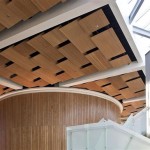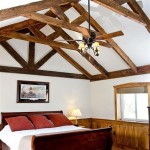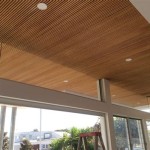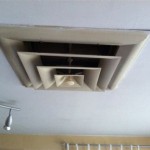What Size Ceiling Fan Is Best For Your Living Room
Selecting the appropriate ceiling fan size for a living room is a crucial component of optimizing comfort and energy efficiency within the space. A fan that is too small will struggle to effectively circulate air, leaving areas feeling stagnant and uncomfortable. Conversely, a fan that is too large may create disruptive drafts and appear disproportionate to the room's dimensions. Determining the ideal fan size requires careful consideration of the room's square footage, ceiling height, and intended use.
The primary function of a ceiling fan is to improve airflow, which contributes to both cooling and heating efficiency. During warmer months, the downward airflow created by a ceiling fan helps to evaporate perspiration on the skin, creating a cooling sensation. In cooler months, reversing the fan direction to an upward airflow helps to redistribute warm air that rises to the ceiling, reducing the strain on the heating system and promoting more consistent temperatures throughout the room. Therefore, selecting the correct fan size is not merely an aesthetic choice, but one that directly impacts the functionality and energy performance of the living room.
Beyond square footage, understanding different types of fans and their characteristics is important. Consider factors such as blade pitch, motor size, and the number of blades when making a selection. These factors influence the fan's ability to move air efficiently. An optimized ceiling fan installation can represent a long-term advantage for homeowners. The selection process needs to be well-considered.
Understanding Room Square Footage and Fan Size
The most important factor in determining the optimal ceiling fan size is the square footage of the living room. This measurement provides a baseline for selecting a fan with an appropriate blade span. Blade span refers to the diameter of the circle the fan blades make when in motion. Larger rooms require larger blade spans to effectively circulate air throughout the entire space.
As a general guideline, consider the following recommendations based on square footage:
- Rooms up to 75 square feet: A ceiling fan with a blade span of 36 inches or less is typically sufficient. These smaller fans are well-suited for very small living rooms, breakfast nooks, or home offices.
- Rooms between 76 and 144 square feet: A ceiling fan with a blade span of 42 inches is generally recommended. This size offers a good balance between airflow and physical size for moderately sized rooms.
- Rooms between 144 and 225 square feet: A ceiling fan with a blade span of 52 inches is a popular choice for many standard-sized living rooms. This size provides ample airflow to comfortably cool or heat the space.
- Rooms between 225 and 400 square feet: A ceiling fan with a blade span of 56 inches or larger is recommended. For larger living rooms and open-concept spaces, these larger fans are necessary to ensure adequate air circulation.
- Rooms larger than 400 square feet: Consider using multiple ceiling fans strategically placed throughout the room. Alternatively, explore extra-large ceiling fans designed specifically for expansive spaces.
These are general guidelines, and individual preferences may vary. However, they serve as a useful starting point for determining the appropriate blade span based on the square footage of the living room. When measuring the square footage, multiply the length and width of the room.
Considering Ceiling Height and Downrod Length
While square footage is the primary factor in determining blade span, ceiling height also plays a significant role in ensuring optimal fan performance and safety. Ceiling fans should be installed with a certain amount of clearance from the floor to prevent accidental contact and maximize airflow. Generally, a minimum clearance of 7 feet from the floor to the fan blades is recommended. Most building codes require this minimum height.
For standard 8-foot ceilings, a "hugger" or "flush mount" ceiling fan is often the best choice. These fans are designed to mount close to the ceiling, minimizing the overall height of the fixture. If you're installing on an 8-foot ceiling, a hugger fan is necessary.
For ceilings higher than 8 feet, you will likely need to use a downrod to lower the fan to the optimal height. A downrod is a metal extension rod that connects the fan motor to the mounting bracket. The appropriate downrod length depends on the ceiling height:
- 9-foot ceilings: A 6-inch downrod is typically recommended.
- 10-foot ceilings: A 12-inch downrod is generally recommended.
- 11-foot ceilings: An 18-inch downrod is typically recommended.
- 12-foot ceilings: A 24-inch downrod is generally recommended.
Using the correct downrod length will ensure that the fan is positioned at the optimal height for effective air circulation without compromising safety. Consult the manufacturer's recommendations for specific downrod lengths for your chosen fan model.
It is important to consider sloped ceilings as well. For sloped ceilings, special downrods and mounting hardware are often required to ensure the fan hangs properly and operates safely. Some fans are specifically designed for sloped ceilings, providing greater flexibility in installation options.
Exploring Fan Features and Functionality
Beyond size and height considerations, several additional factors can influence the selection of a ceiling fan for a living room. These include energy efficiency, motor type, blade pitch, and aesthetic design.
Energy Efficiency: Look for ceiling fans with the ENERGY STAR label. These fans meet strict energy efficiency guidelines set by the Environmental Protection Agency (EPA). ENERGY STAR certified fans typically consume significantly less energy than standard fans, reducing electricity bills and minimizing environmental impact. Consider the motor type; DC motors are generally more energy-efficient than AC motors. Look for models with high airflow efficiency ratings (CFM per watt).
Motor Type: Ceiling fans are typically equipped with either AC (alternating current) or DC (direct current) motors. AC motors are the traditional type and are generally less expensive. DC motors are more energy-efficient, run quieter, and offer more speed options. While DC motors may have a higher upfront cost, the long-term energy savings can often offset the initial investment.
Blade Pitch: Blade pitch refers to the angle of the fan blades. A steeper blade pitch generally results in greater airflow. However, fans with very steep blade pitches may also produce more noise. Look for fans with a blade pitch between 12 and 15 degrees for a good balance of airflow and quiet operation.
Aesthetic Design: Ceiling fans are available in a wide variety of styles, finishes, and materials. Choose a fan that complements the overall décor of the living room. Consider factors such as the finish of the fan motor and blades, the style of the light fixture (if applicable), and the overall design aesthetic. Common styles include traditional, contemporary, modern, and rustic. Fan blades are available in materials such as wood, metal, and plastic. Select a material that suits the room's style and budget.
Lighting: Many ceiling fans include integrated light fixtures. If the living room requires additional lighting, consider a fan with a built-in light. Choose a light fixture that provides adequate brightness for the space and complements the overall design. LED lights are a popular choice due to their energy efficiency and long lifespan. Consider a fan with dimmable lights for greater control over the ambiance of the room.
Remote Control and Smart Features: Many modern ceiling fans come with remote controls that allow for easy adjustment of fan speed and light settings. Some fans also offer smart features, such as Wi-Fi connectivity and compatibility with smart home systems. These features allow you to control the fan remotely using a smartphone or voice commands. Consider whether these additional features are important to you and fit within your budget.
Number of Blades: The number of blades on a ceiling fan can affect its appearance and, to a lesser extent, its performance. While the number of blades generally has less impact on airflow than blade pitch and motor type, it can still influence the overall aesthetic of the fan. Five-blade fans are a traditional choice, while three-blade fans tend to have a more modern look. Some fans feature unique blade designs that combine both aesthetics and performance.
Selecting the right ceiling fan for a living room involves a comprehensive assessment of the room's dimensions, ceiling height, and desired features. By considering these factors carefully, homeowners can choose a fan that optimizes comfort, energy efficiency, and aesthetic appeal.

How To Choose The Best Ceiling Fan

Best Size Ceiling Fan For Your Great Rooms Hunter

Choosing The Perfect Ceiling Fan Size Style

9 Best Ceiling Fans With Lights Remote For Every Room Size

Best Ceiling Fans In Faart How To Choose A Fan

4 Step Guide To The Best Ceiling Fans For Your Home

What Is The Best Ceiling Fan Location Your Energy Answers
:format(jpeg)?strip=all)
Fans Tips For Making The Right Choice

50 48 46 44 Inch Size Blade Span Ceiling Fans Delmarfans Com

Parrot Uncle Oretha 60 In Indoor Windmill 8 Blade Led Oil Rubbed Broe Ceiling Fan With Light Dc Motor And Remote Control F8217110v The Home Depot
Related Posts








